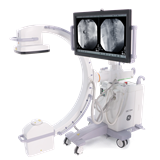Looking to buy a body sculpting machine? Discover which is right for your clinic—cryolipolysis, RF, or ultrasound—with pricing, pros, and clinic fit.
Key takeaways
- Cryolipolysis machines: Best for fat freezing and volume reduction; costs range from $6,000–$45,000+; delivers up to 25% fat reduction per session.
- Radiofrequency (RF) machines: Ideal for skin tightening, cellulite, and facial contouring; priced $4,000–$30,000; suits ongoing aesthetic maintenance.
- Ultrasound machines: Best for fat emulsification and shaping larger areas; expect to pay $5,000–$40,000; results of up to 2.5 cm fat loss per treatment.
- Cryolipolysis clinics: Suited for single, high-ticket treatments with strong ROI per session.
- RF salons: Perfect for businesses aiming for frequent-return clients and skin-focused results.
- Ultrasound spas: Great middle-ground solution for spas expanding into sculpting services.
- Cryolipolysis ROI: Highest per-session income ($300–$800), though treatment time is longer.
- RF & Ultrasound ROI: Faster treatments, lower consumables, and scalable with package deals.
- Compliance check: Always ensure machines are listed or exempt under the ARTG.
Introduction
Body sculpting technology has evolved rapidly, offering clinics and spas in Australia non-invasive ways to reduce fat, tighten skin, and improve body contours. But with the growth in demand comes an abundance of choices—cryolipolysis (fat freezing), radiofrequency (RF), and ultrasound all promise results, but suit different treatment goals and client expectations.
If you're deciding which machine to invest in, this guide walks you through the practical differences between these technologies, how they suit different clinic types, pricing, effectiveness, and essential compliance considerations in Australia.
Cryolipolysis machines: fat freezing technology
What it does
Cryolipolysis works by cooling subcutaneous fat to the point that the fat cells undergo apoptosis (cell death) without harming surrounding tissue.
Ideal for
- Clinics specialising in body contouring or cosmetic medicine.
- Clients wanting dramatic volume reduction.
Advantages
- High fat reduction: Studies show up to 25% localised fat loss per treatment.
- Low maintenance: Minimal consumables required.
- High ROI: Each treatment can be priced at $300-$800.
Considerations
- Slower results; full effect takes 6-12 weeks.
- Best suited to stubborn fat areas rather than overall weight loss.
Average pricing in Australia
- Entry-level machines: $6,000 - $10,000
- Mid-range commercial units: $15,000 - $25,000
- Premium multi-handle units: $30,000 - $45,000+
Radiofrequency (RF) body sculpting machines
What it does
RF uses energy to heat skin and subdermal layers, stimulating collagen and elastin while mildly disrupting fat cells.
Ideal for
- Clinics with facial and skin-tightening services.
- Salons targeting ageing concerns or mild-to-moderate contouring.
Advantages
- Skin tightening: Improves laxity, wrinkle depth, and tone.
- Painless and requires no downtime.
- Fast treatments (20-40 mins).
- Strong for ongoing revenue from packages and memberships.
Considerations
- Less effective for deeper fat.
- Requires multiple sessions (usually 6+).
Average pricing in Australia
- Basic RF machines: $4,000 - $7,000
- Multi-platform or fractional RF: $10,000 - $30,000
Ultrasound body sculpting machines
What it does
Ultrasound cavitation machines emit low-frequency sound waves that disrupt fat cell membranes, allowing fat to be metabolised naturally by the body.
Ideal for
- Spas and salons expanding into body contouring.
- Clients wanting non-invasive treatments with visible reduction.
Advantages
- Effective fat emulsification: Clinical studies show up to 2.5 cm waist reduction per session.
- Great for treating larger areas like abdomen and thighs.
- No downtime, comfortable experience.
Considerations
- Results vary more by client body type.
- Not suitable for obese clients.
- Typically requires 6-12 sessions.
Average pricing in Australia
- Starter units: $5,000 - $10,000
- Advanced machines with RF combo: $15,000 - $40,000
How to choose: clinic types, clientele, and revenue goals
For high-end cosmetic clinics
- Invest in cryolipolysis or RF + ultrasound combo machines.
- Focus on higher per-treatment costs with visible ROI.
- Ensure the machine has TGA compliance and ARTG listing.
For beauty salons
- Consider RF for non-fat reduction skin services and lower entry cost.
- Add ultrasound cavitation for expanded body sculpting options.
For day spas
- Ultrasound or RF offer the best balance of treatment comfort, affordability, and versatility.
- Package treatments as part of wider service menus.
Questions to ask before buying
- Who is your primary clientele: fat loss, skin tightening, or both?
- Can your treatment room accommodate the equipment footprint?
- What training/support is provided?
- Is the machine registered on the ARTG?
- Does the supplier offer after-sales support and servicing?
Compliance and machine regulation in Australia
ARTG listing
Any therapeutic machine that claims to treat or modify body tissues must be listed on the Australian Register of Therapeutic Goods (ARTG).
Check the registration by searching the TGA database.
Import regulations
If importing equipment:
- Must comply with Electromagnetic Compatibility (EMC) and Electrical Safety standards.
- Should include manufacturer's documentation and local supplier servicing agreement.
Training and usage regulations
While many machines don’t require a formal qualification, it is strongly advised that operators undertake training with the manufacturer or a certified course in:
- Body sculpting device use
- Infection control
- Client consultation and contraindications
Real-world use cases: matching machine types to your clinic model
Choosing the right body sculpting machine depends on your business model, clientele, and treatment goals. Here are practical examples to guide your decision:
Case study 1: Boutique skin clinic in Melbourne expands non-surgical treatments
- Profile: High-end cosmetic clinic focused on skin rejuvenation and anti-ageing
- Technology: Radiofrequency (RF) machine
- Why: Integrates with existing facial and collagen services, attracts repeat clients, and supports membership models
- Result: 70% client rebooking rate, boosting treatment revenue by 32% within six months
Case study 2: Wellness and weight loss clinic in Sydney targets high-value fat-loss clients
- Profile: Body transformation centre offering nutrition and weight loss programs
- Technology: Cryolipolysis fat freezing machine
- Why: Provides premium, one-off fat reduction treatments aligned with health programs and high profit margins
- Result: $21,000 revenue from 35 clients in the first quarter, mostly upsold from existing packages
Case study 3: Day spa in Brisbane diversifies to attract new clients
- Profile: Established spa offering massage, facials, and wellness services
- Technology: Ultrasound cavitation combined with RF
- Why: Offers non-invasive, no-downtime body contouring that complements existing services, suitable for bundled sessions
- Result: $8,000 in new service sales over 60 days with minimal staff training
Key takeaway for buyers
Consider your client needs and business structure:
- Are clients seeking quick fat-loss or gradual improvement?
- Do you prefer single, high-ticket treatments or ongoing memberships?
- Is your team trained for advanced devices or do you need straightforward equipment?
Choose a sculpting machine that complements your services, attracts your target market, and grows profitably with your clinic.
FAQs: choosing the right sculpting machine for your clinic
1. Which machine is best for fat reduction?
Cryolipolysis offers the most significant fat reduction in a single session (up to 25%), ideal for targeted fat pockets. Ultrasound is more gradual and better suited for larger areas.
2. Which is best for skin tightening?
Radiofrequency (RF) is best suited for tightening loose skin, reducing wrinkles, and contouring the face and body.
3. Are combination machines a good investment?
Yes. Many suppliers offer RF and ultrasound combo units, allowing for simultaneous skin tightening and fat emulsification. These units usually start from $15,000+.
4. How soon will my clinic see ROI?
- Cryolipolysis: Fewer sessions per client, higher pricing. Potential ROI in 3-6 months with moderate booking volume.
- RF and ultrasound: Lower per-session cost, but more frequent bookings. ROI often seen in 2-4 months.
5. What ongoing costs should I consider?
- Consumables (gel, replacement handles)
- Servicing and calibration (especially cryo units)
- Marketing and staff training
6. Can I use these machines without medical qualifications?
In Australia, non-medical practitioners can operate these devices, but best practice includes certified training and following TGA guidelines.
Final thoughts
Investing in a body sculpting machine is not just about features or price—it’s about matching the technology to your clinic’s unique goals, space, and clientele. Whether you're aiming for high-margin fat reduction, repeat skin treatments, or expanding into full-service body contouring, the right machine can significantly boost your clinic’s revenue and reputation.
Always verify ARTG compliance, seek transparent after-sales support, and consider treatment ROI when evaluating your options.
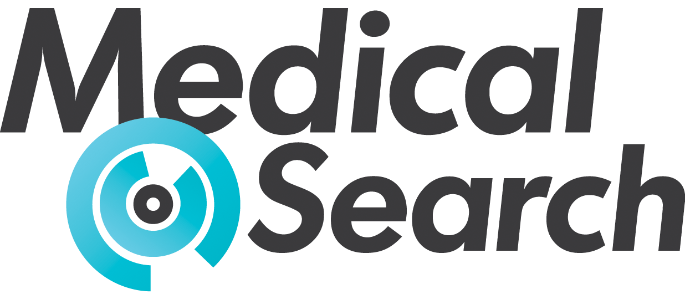

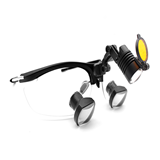
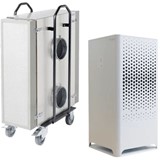







-160x160-state_article-rel-cat.png)
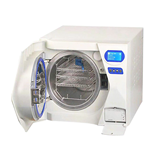
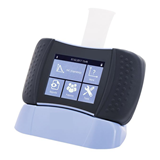




%20(1)-160x160-state_article-rel-cat.png)
